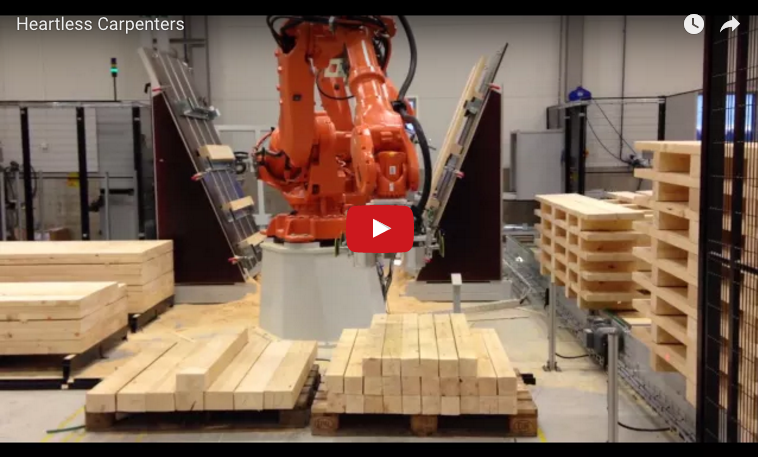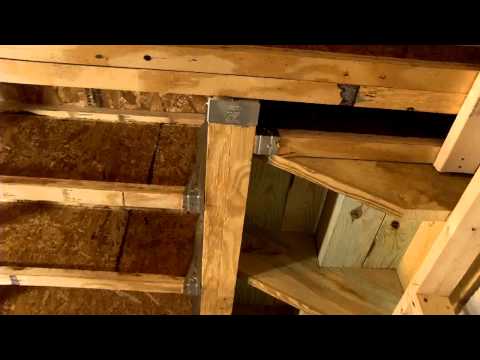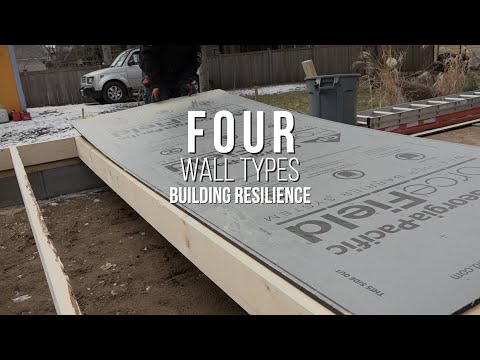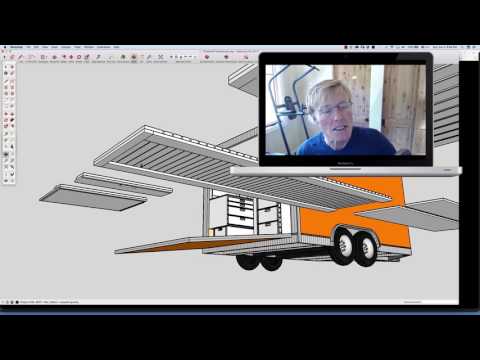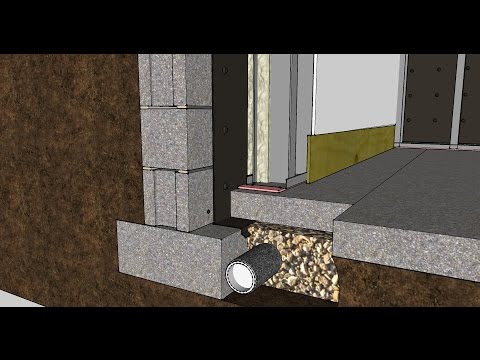Renggli, a 100-year-old firm in Switzerland, builds high-performance, energy-efficient, modular structures. They use CNCs, suction cup lifts, robotic saws, tilting tables, gantry cranes, and more.
Walking through the modular construction process
Platform systems are stacked, sorted, and stored on shelving racks. Robotic forklifts retrieve materials as needed.
BIM models drive the designs
BIM stands for Building Information Modeling, and it determines exactly how much lumber is needed and what type, how many nails are needed, and where; where electrical boxes are located, and more.
The next robot is a CNC Machine
Gypsum board and plywood are cut and shaped with router bits on the CNC machine. The model dictates where electrical and plumbing runs are cut out.
Sliding tables and suction cups move the wall system components around the shop to assemble the parts.
The Hundegger saw is a real humdinger
Forty-foot pieces of wood are fed into the Hundegger saw, which can cut in five axes and drill screw holes, cut mortices for Mortice and tenon joints), and cut holes for pipes and wires.
The factory only uses engineered wood, not solid lumber, because solid lumber is too inconsistent.
Butterfly tables lift and flip wall sections, laminating layers to faces
Two tables fold upward toward each other ninety degrees, allowing one table;e to "pass" the wall to the other table.
A Gantry crane spans the entire factory, carrying stacks of wood or wall sections.
Mineral wool insulation is added between the "studs," and wood fiber insulation panels are added to the outer surface.
Drywall is installed with a nail gun after wire chases are installed in the panels.
Assembled panels are stacked on trailers, wrapped in plastic, and heat-sealed to protect them from moisture. The plastic cannot be reused, but it is sent to a recycling facility.
There are a lot of advantages of modular construction over site-built, and the quality of the finished product can absolutely be one of them.
With good modeling, modular buildings can be efficient and sustainable.
The drawbacks that Belinda points out are the high carbon footprint of rock wool insulation, the higher cost, and the difficulty of scaling up the model because even with good modeling, manufacturing houses is different than manufacturing cars, watches, or cell phones.
